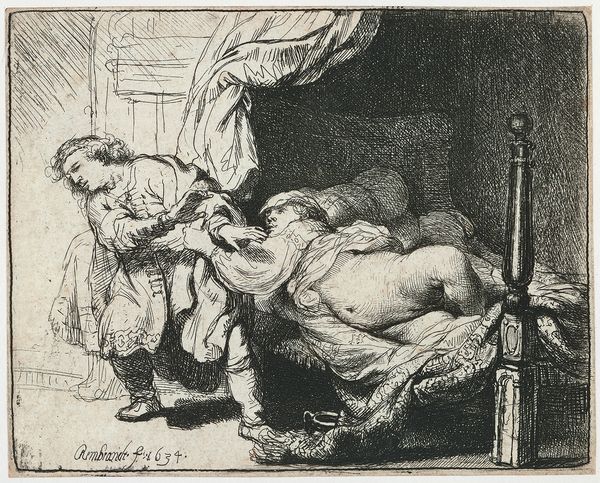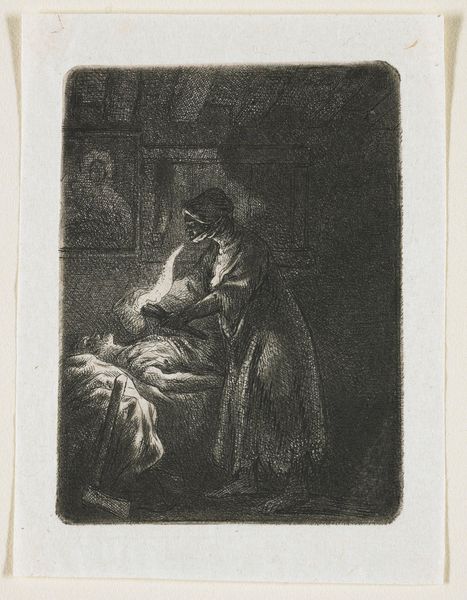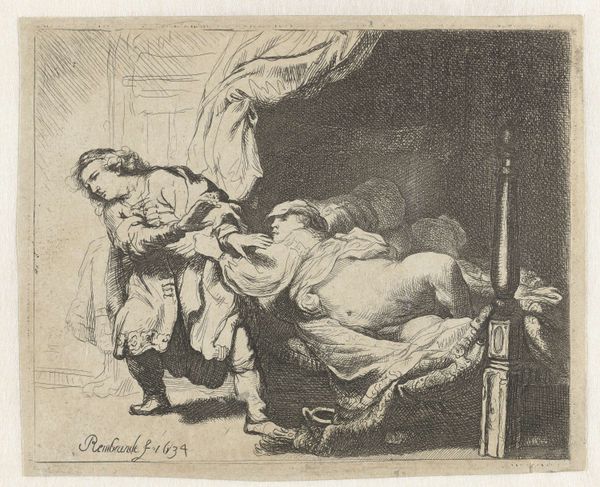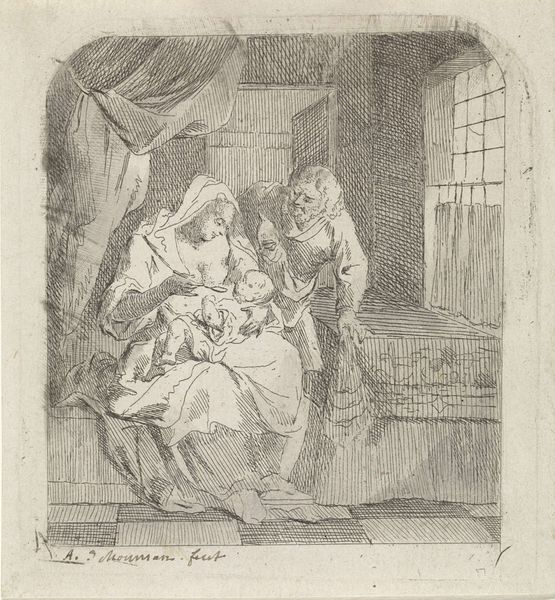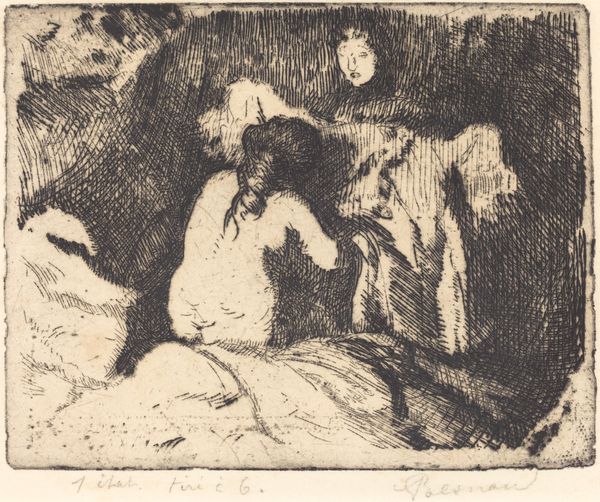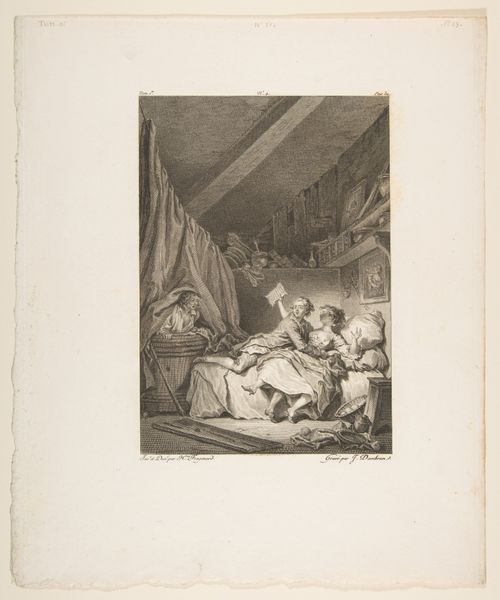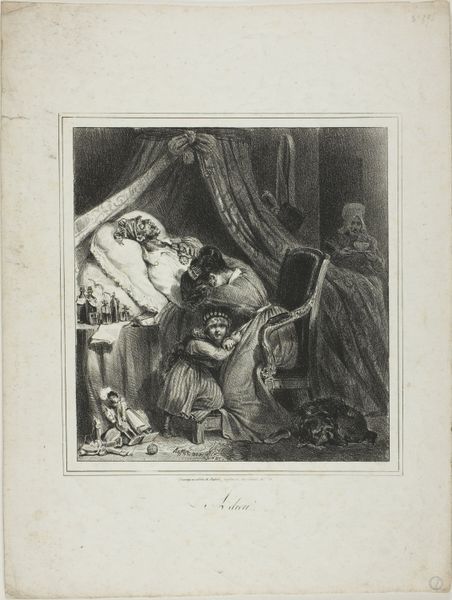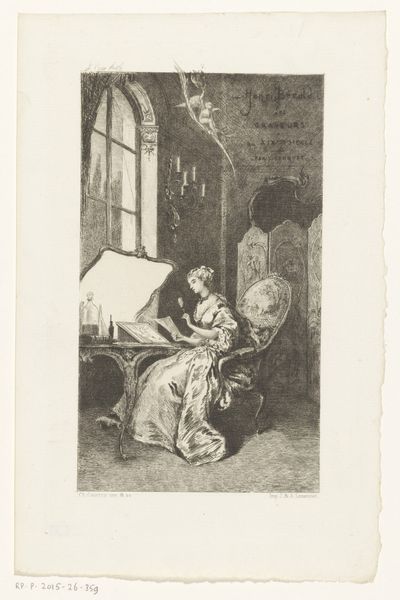
print, etching
#
narrative-art
#
baroque
# print
#
etching
#
figuration
#
genre-painting
#
nude
Dimensions: height 90 mm, width 115 mm
Copyright: Rijks Museum: Open Domain
Curator: Immediately striking is the clear dynamism of Rembrandt's "Joseph and Potiphar's Wife," an etching that masterfully captures a pivotal biblical moment. The detail is really incredible. Editor: The figures, however, feel oddly staged to me. It seems to betray an inherent understanding of how Rembrandt’s audience might view these scenarios, wouldn’t you say? This looks to be carefully presented for moralizing observation. Curator: Precisely. This etching, completed in 1634, visualizes the story from the Book of Genesis. Joseph, resisting the advances of Potiphar's wife, attempts to flee, but she grabs his cloak, using her perceived status to take it by force. It is really incredible to examine the level of printmaking here. Notice the deep textures. Editor: Yes, the interplay of light and shadow really emphasizes the narrative tension and that kind of socio-political power that comes through art. What about that relationship between biblical morality being performed in front of an early modern audience? That strikes me as key. Curator: Absolutely, because the intaglio lines that Rembrandt creates—which is just such a marvel—are, I think, deployed intentionally. The varying depths must require so many steps and precise applications, emphasizing that conflict of the high and low which marks its era. How this print could disseminate throughout society reflects the distribution and reception of cultural ideas, doesn't it? Editor: And look closely; observe how the textures on Potiphar’s wife’s robe almost imply an affluence that is also being threatened. She sees a chance at power, just as she sees her class undermined by Joseph, this interloper from Judea. The whole thing hinges on understanding cultural perception, especially during Rembrandt's time. It also calls attention to the function and accessibility of etchings in seventeenth-century Holland, opening conversations beyond the art itself, even, like moral conduct and foreign power. Curator: You're correct. The image has been stuck with me. And it all really comes back to Rembrandt's skillful manipulation of the materials and the printing process—this ability to evoke not just a historical episode but to also capture something essential about that conflict that exists across any material or status divide. Editor: A fascinating commentary that still triggers new questions and revelations, centuries after its creation!
Comments
No comments
Be the first to comment and join the conversation on the ultimate creative platform.
